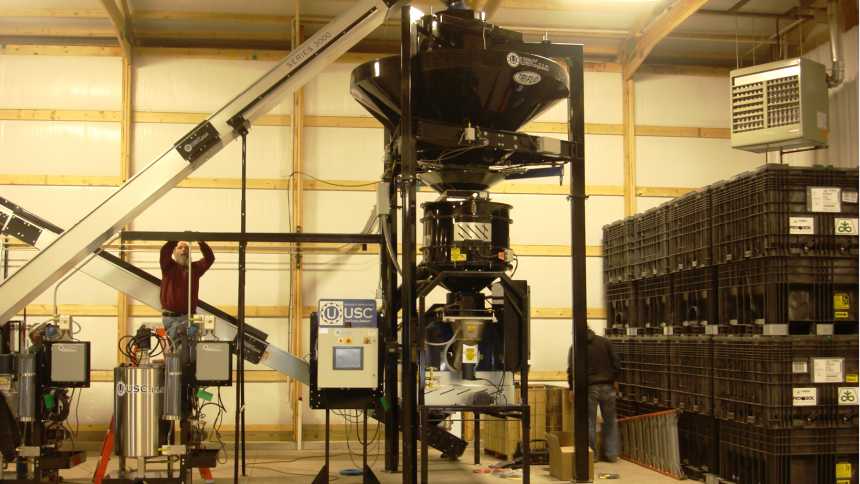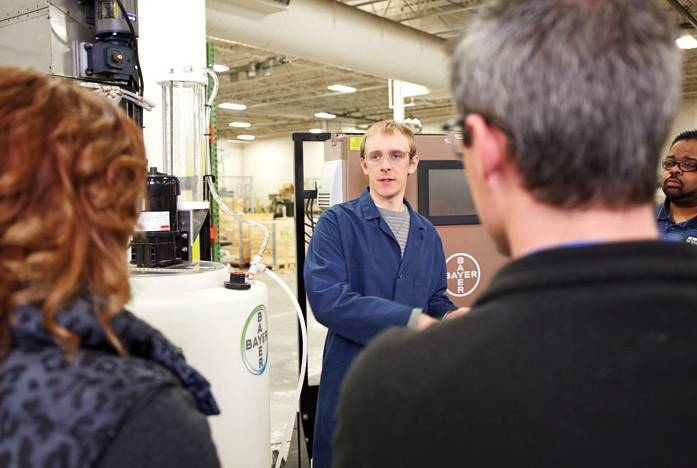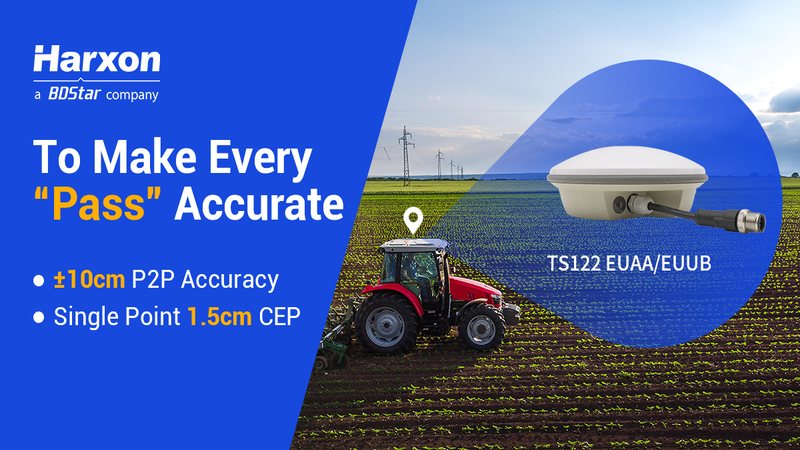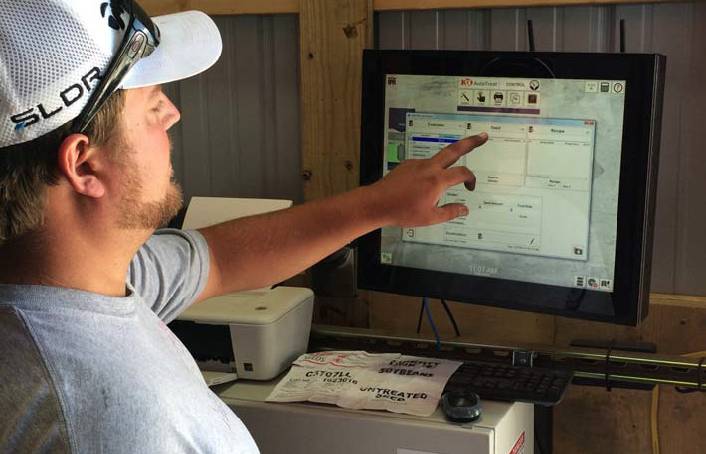Great Service, Advanced Automation Set Seed Care Equipment Apart

The seed treatment products retailers and seed professionals want to apply have become increasingly complex. Photo courtesy: USC.
If you ask Todd Grimes, Vice President of Sales and Marketing with USC LLC, what is driving the seed treatment equipment industry, it’s all about customers’ desire for more accuracy and efficiency.
At the same time, the products retailers and seed professionals want to apply have become increasingly complex. Relying on one main product tank from which you pull all chemistry to put on the seed is no longer an option.
“Today it’s very common for a lot of our systems to go out with three to four chemical stations they want to pull from and do more of a recipe-based set-up,” Grimes says. “We are starting to see demand for more options, and from an equipment standpoint, we’re very excited about that.”
Meanwhile, the treating process for soybeans has moved downstream to the ag retailers and local co-ops, which run seed through continuous or drum treaters and then deliver it freshly treated to growers. This is the niche of companies like USC and KSi Conveyors Inc.
USC’s flagship product is its fifth-generation LPV continuous flow treater, which it released just over two years ago. Designed with maximum flexibility in mind, it offers three ways to meter the seed depending upon set-up. It features a tilting drum mechanism which allows the customer to adjust seed retention time in the drum according to environmental conditions.
“LPV is the heart and soul of our company. But now we’re getting a lot of inquiries saying, ‘we want to put value-added products onto our corn seed,’ and inquiries about how to take four to five cover crops and put them into a mix so it is homogenous throughout the whole blend,” says Grimes. Thus, USC developed the U-BATCH batch treater, which allows the customer to do exactly that.
But the thing USC is most excited about? Its enhanced servicing network it has put in place over the last eight months, propelled by its joint venture with AGCO GSI formed in January. With a network of 31 dealers across the U.S. and Canada, all systems are within a two-hour drive. Before, a malfunctioning system in Louisiana, for example, would have meant a day’s (or longer) trip out from its Kansas facility. Dealers also keep a full range of USC parts on hand for fixes.
A lot of issues, Grimes explains, tend to be simple troubleshooting questions like leaving a box unchecked or a setting turned off. Having someone local who can train new people running systems and familiarize them with the seed treating process means the company can better deliver on its promises.
“We’ve been in business for 16-plus years, and enjoyed great industry partnerships. One thing we’ve heard from industry is the importance of localized representation. We’re as excited about the dealer network we’ve brought to the market as any new product,” Grimes says.
Accuracy, Efficiency
Determining formulations and active ingredients, and deciding the rate at which they are applied — those are the jobs of the ag retail location or chemical manufacturer. “Our job is to bring in equipment that accurately performs that. If you give us a rate, we hit that rate,” says Rick Smith, KSi Marketing Director. “It’s a fairly good-size investment upfront for the equipment. But the real ROI in this industry is on the chemical and the seed. Our equipment is simply a way for those chemical and seed companies to ensure their products work like they did in test plots and back in the lab.”
When KSi patented a special cleated belt designed to be gentle on seed, it quickly found itself doing bulk set-ups for ag retailers starting about 15 years ago. Seed treatment downstream began happening around the same time. “We were in a wonderful position to be able to take advantage of growth in that market. We hit a peak in maybe 2012, 2013 — since then, these bulk downstream market sites have been declining a little bit, or at least not growing at the same rate that they were in that boom period,” Smith says. Now, it’s about competitive differences and incremental improvements and the age of automation.
KSi, a family-owned operation that serves customers out of its Kansas and Illinois locations, worked with other treater brands for a number of years, supporting, automating and selling their equipment before it began making its own seed treater — the KSi 4808NGA Seed Applicator — which is now in its fourth year of production and is the big moneymaker for its customers.
What sets the Seed Applicator apart, according to Smith, is that it provides 80% coverage in the atomizing chamber and doesn’t rely on the drum to compensate for coverage. “It does a great job on initial application efficiency, and addresses the issue of sticky beans,” he says.
Seed is run through the KSi Seed Applicator between 600 and 2,500 pounds per minute, depending on the commodity. Seed is metered into the treater either through a seed wheel or via loss in weight (LIW). LIW achieves another level of accuracy that takes away the assumptions made with the seed wheel method.
No Human Touch Needed
On the liquid flow side, chemical companies have worked hard to eliminate worker exposure. This is why many providers have multiple liquid stands, and prepackaged chemicals in kegs from which they can draw without any human interference. This is the trend, although plenty are still using mix tanks to pull together chemicals.
Bayer SeedGrowth’s OnDemand automated dosing system meets exactly this need, to reduce the need for blending.

Demonstration and training on Bayer SeedGrowth equipment during a training course. Photo courtesy: Bayer SeedGrowth.
OnDemand, which launched in 2014, is focused on the downstream markets and allows the treater to pull seed treatment products directly out of container, and meter it right on seed (primarily soybean, but also cotton, wheat, and rice). In the past when retailers received product they had to measure out specific amounts, mix in the tank, and dilute with water, which took time and effort. Meeting EPA requirements for each product to prevent exposure also posed issues.
“With this new system, it is all pumping directly out of the product container onto seed, eliminating work and mixing, and reduces exposure of the treater to the products,” says Ron Reichert, Bayer SeedGrowth Technology Application Manager.
Scott Hess, Equipment Operations Manager out of Bayer’s Shakopee, MN, facility, points to another advantage for the customer: Instead of ending up with a gallon or two of extra product that you would otherwise need to store, you just reverse the pumps and back the product into the appropriate containers.
KSi’s equipment can meter a chemical at the given rate through one of two ways: 1. A flow meter, which monitors the flow of chemical through a pump, and utilizes a calibration process. 2. LIW, wherein a keg is put on a scale with high resolution. The system asks for a chemical’s density, and so as you pull it from the keg you meter the correct rate by declining weight. It’s an accurate system, but subject to environmental conditions that don’t always cooperate.
Automation Turning Heads
While conveyors handle seed and treaters apply chemical to the seed, automation controls the whole process. It’s that critical third component. In the seed care equipment world, automation has grown more sophisticated. Liquid rate has moved from ounces-per-hundred weight to milligrams of active ingredient (A.I.) per seed.
“At the level we’re at today, farmers are planting seed literally within inches of each other and repeatedly within that inch. If they don’t hit that standard then they are losing yield one way or another. You can imagine when they talk about protecting seed, how crucial it is that each seed has the right amount of chemical on it,” Smith says.
With growing adoption of applying milligrams of A.I. per seed, each time a treater changes the seed lot, there is a different number of seeds per pound, and they have to adjust that rate. Newer systems like Bayer’s OnDemand simplify things. Enter the seed per pound, and the system adjusts the dosage rate to deliver the milligram of A.I. per seed that is called for in the recipe. “Instead of having to custom-mix a slurry for each seed lot, we are able to make it seamless,” Reichert says.
In addition, OnDemand allows the customer to monitor inventory levels, because each keg that is brought in has to be scanned into the system. “So if they see something they start to fall short on, they are able to see that well in advance, instead of running out and taking a chance of not being able to provide to their customers,” Hess adds.
All of these computers simultaneously collect reams of data on the entire process. A typical system (not just Bayer’s) can tell you exactly how much seed was treated, what recipe was used, what the target rate was, and how close you got to that rate.
Since the treating season can be as short as a couple of weeks up to four to six weeks, and multiple semi-trucks might be lined up waiting to get their seed and drive out to the field, it’s key to have ample, round-the-clock support if automation goes down.
KSi offers its KSi AutoTreat platform, which is flexible enough to handle either a standalone or bulk system and uses an intuitive Windows-based interface. A report can be run on a local branch level and interface with other computing systems. “We hear so much about big data in ag. This is really the ability to tie one database to another,” says Smith, adding, “Advancement of automation is really what is turning heads in ag retail industry.”







